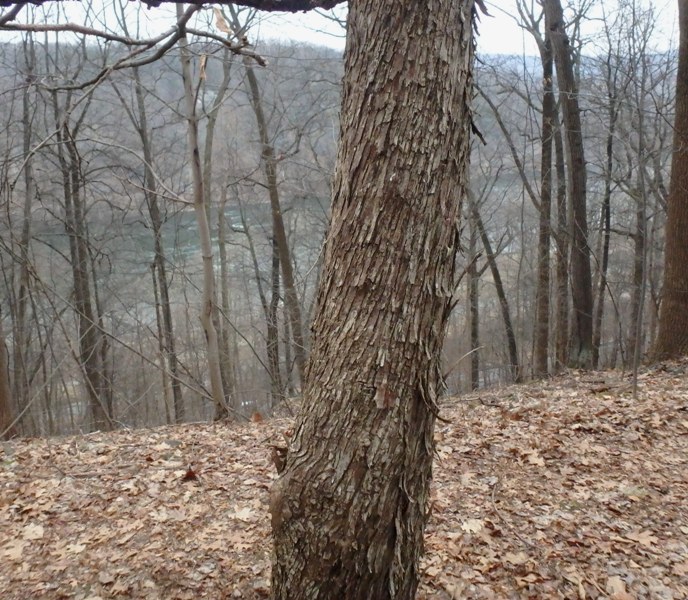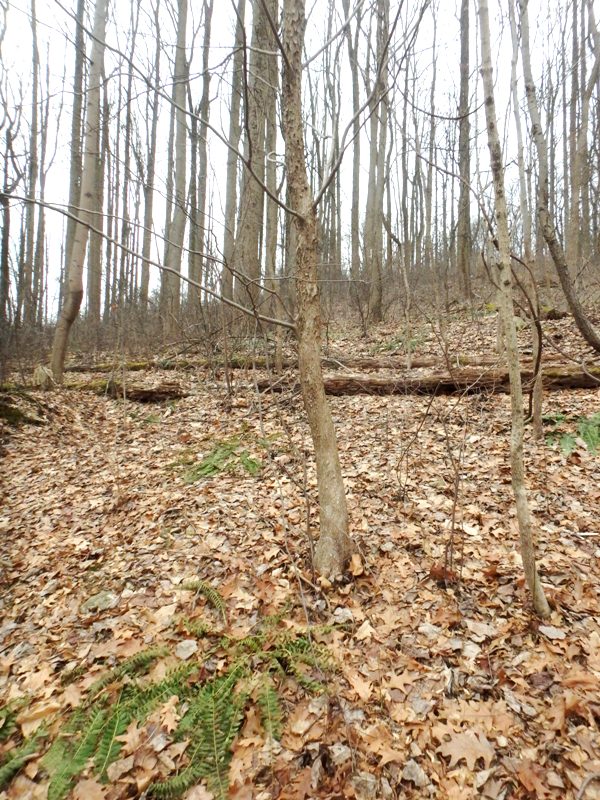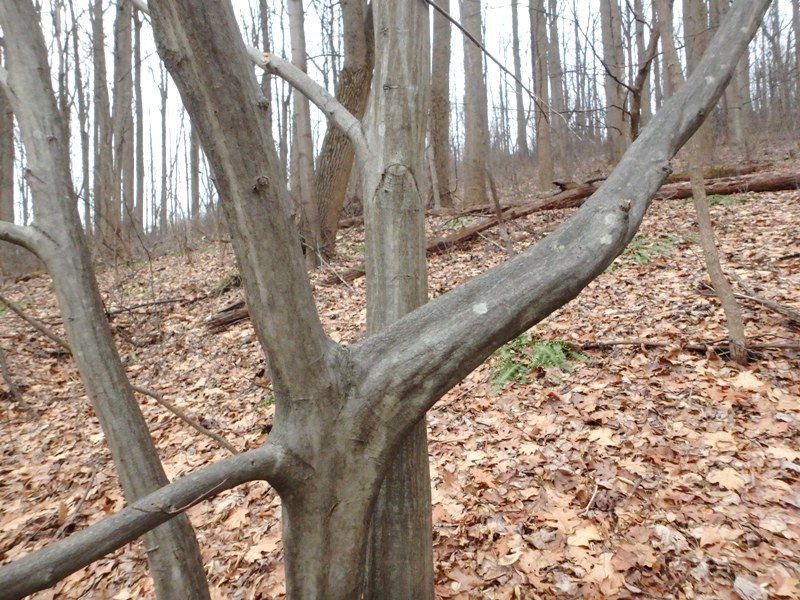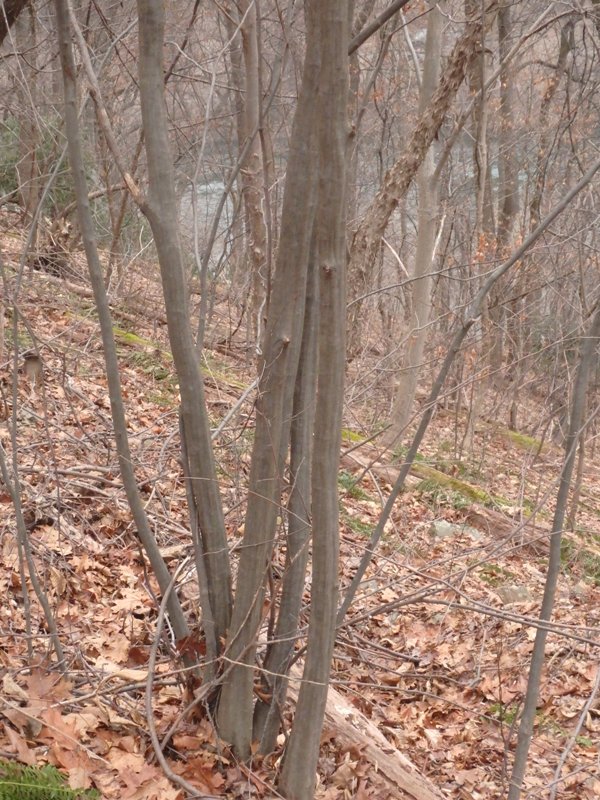Ironwood Or Hornbeam? Yes To Both
January 17, 2019
Ostrya virginiana (hop-hornbeam)
by Tim Burris, preserve manager.
There are several tree species from around the world that are commonly called Ironwood. As would be expected they all have very hard wood. In the eastern United States there are two species that I know of, and both belong to the Birch (Betula) Family, but are in different genera. The Birch family, in addition to birches (sweet birch, paper birch, yellow birch, etc.), also include Alders, Hop Hornbeams and Hornbeams. The leaves of these four genera have similarities, but they are pretty subtle. Their flowers however are pretty similar and called catkins. Catkins are usually narrow hanging clusters that could remind one of a cat’s tail. (Catkins are not exclusive to the Birch Family, but birch catkins look similar.)

Eastern Hop Hornbeam
Eastern Hop Hornbeam (Ostrya virginiana) is what I grew up knowing as Ironwood. I remember my Grandpa pointing out a very hard tree with funny bark on our walks in the woods when I was a youngster. As a true woodsman and farmer his knowledge of the woods was encompassing and first hand. I absorbed more things from those walks than I learned, yet as I grew up that knowledge would amazingly surface when needed. Over the years, I have cut Hop Hornbeams when they fell across a trail. A few cuts and you have to sharpen your chainsaw. Grandpa knew that.

Eastern Hop Hornbeam is an understory tree.
It was when I took a dendrology class in college that I learned the book side of what Grandpa showed me all those years before. Hop Hornbeam is a small understory tree – Dogwood sized. I still think the bark is cool looking. Dr. Sakai called it “cat scratch bark”, and if you look closely you’ll see that the bark peels in very narrow parallel strips. I know this tree more as an upland tree at Mariton, so I was surprised to find it growing with “its feet wet” along the shores of Lake Nockamixon one day when I was canoeing.

American Hornbeam
American Hornbeam (Carpinus caroliniana) is also called ironwood by people. (Note that it is a different genus than Hop Hornbeam.) Grandpa called it musclewood, and would flex his bicep to illustrate. Nearly fifty years later I still flex my arm unconsciously when I tell people about American Hornbeam, and I still prefer to call it musclewood. The tree just looks like a muscle in use. (Some call it blue beech, but I don’t like that name because it isn’t a Beech, and people mix up the names birches and beeches.) Like Hop Hornbeam it is an understory tree. It also has finely serrated leaves.
So, Hop Hornbeam and Hornbeam are in different genera but the common names sound so similar. How do you remember which is which? Dave Steckel gave me this little trick. The name Hop Hornbeam has two “o”s, and it is in the Latin genus is Ostrya, which also starts with an “o”. It sounds silly, but it has helped me countless times.

A clump of American Hornbeam
These two trees are ideal for a landscape with some shade. It is a downright shame that designers and landscapers don’t use these beautiful native trees. Their growth form is naturally artistic. They also grow in small clumps or groves (ideal for a wildflower bed). They are interesting in all seasons from their bark to their flowers and graceful sheaves of seed. The leaves cast dappled shade, and turn pale yellows and pinks in the fall. Plus, they are in the birch family, which means deer don’t generally browse them.
next post
Black Rat Snake
June 21, 2018
By Daniel Barringer, Preserve Manager. This beautiful black rat snake (Pantherophis alleghaniensis) was resting on a stump in the back yard. A few hours before […]
continue reading